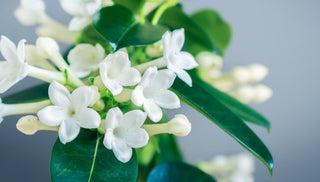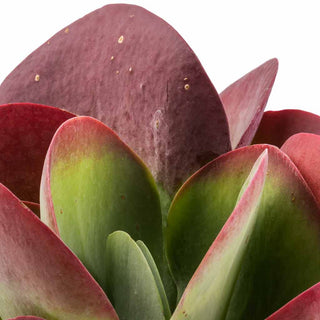☘ Origin: Asia, Wild in Vietnam, Southern China, Korea, Taiwan, Japan, Myanmar, India and Bangladesh
☘ Family: Coffee Family Rubiaceae
☘ Botanical Name: Gardenia jasminoides
☘ Common Name: Cape Jasmine
Symbolism: Gardenia flowers are given as symbols of trust. They show love and respect for a person. They can also symbolize clarity because of this single white hue, the gardenia is often viewed as a representation of purity, clarity, and innocence, often used in wedding ceremonies.
🍃 Shop Your Gardenia Today!
🔆 Light
Indoor Gardenias prefer bright light, but not direct sunlight, especially during summer. Placing them in a sunny window that gets afternoon shade is best.
Give your plant a turn every few days to expose all sides to light for even growth from all sides.
💧 Water
Keep the Gardenia's soil moist, but reduce waterings in the winter. Drip irrigation works best for this plant, as it keeps water off the leaves, which can cause fungal leaf spots.
To give your plant the absolute best, room-temperature rainwater and bottled spring water are your best options. Any water containing sugar or salt will hurt your plant!
☁️ Humidity
This plant also prefers a high humidity level, above 60 percent. Indoor plants may require the use of a humidifier or constant misting using filtered-water during a cold, dry winter, to maintain proper humidity.
🌡️ Temperature
Average room temperatures between (16-24°C). Cold winter drafts and blowing heaters can damage the leaves.
🧴️ Food
Feed Gardenias during the growing season to keep them healthy and flowering. Use a fertilizer specially made for acid-loving plants. Feed every 2 weeks with a high-potassium fertilizer that contains iron, diluted by half. Only fertilize when watering to avoid fertilizer burn.
🐾 Toxicity
Toxic to pets if ingested, It could cause stomach irritation, possible vomiting or diarrhea.
In order to maximize your Gardenia's blooms, you'll need to make sure its growing conditions are spot on. Recommended fertilization and watering needs are the first steps to healthy blooms. Also, wait to prune your plant after the last blooms have faded. This way, you won't cut back any growth on which new buds may form. Lastly, you can prevent 'Bud Drop' - a condition known to affect this plant - by assuring humidity and water levels are just right (not too dry and not too moist).



